Recently, there has been a lot of talk about dynamic leadership. A dynamic process or system is one that is marked by continual change, activity, or advancement. Static is the inverse of dynamic. It is critical for leaders to show dynamism in their leadership abilities. But, before we can talk about or practise dynamic leadership, we must first slow down. We must be able to halt, take a deep breath, and concentrate on strengthening our self-awareness.
Many people would agree that 2020 was a year filled with significant problems. Many organisations are still being crushed by constant waves of change as a result of the worldwide pandemic and economic insecurity. To thrive in the future, leaders must learn to serve in order to surf these waves. Instead than rejecting change, leaders must cultivate the flexibility and agility required to adapt to new circumstances.
Leaders must maintain an eye on the horizon while constantly reacting to the situation in front of them rather than chasing every chance. Leaders must be adaptable. Dynamic leaders recognise that we are no longer living in a static environment. They decided to concentrate on only one item at a time. Leaders understand the need of providing their staff with a feeling of security but also challenging the status quo on a regular basis. They must cultivate solid relationships while simultaneously achieving high levels of performance.
What should you be looking for?
Because there is little collective leadership expertise in managing polarities, overwhelming sentiments of change are popping up in all capacities across sectors and workplaces. It’s an intriguing occurrence since the all-virtual working environment may have been the most visible proof of a massive job transition, yet it feels so strange in some respects. Managing polarities, on the other hand, is entirely abnormal.
How can we forge on into new terrain while retreating from others? How do you keep the long-term strategy in mind while managing the week ahead? These components are attempting to tug us in a variety of directions. How can we be strategic and visionary while being execution-oriented and without losing sight of day-to-day tactical operations?
Managing polarities has always been difficult. However, as a result of change, and the quantity of change that is occurring, it is perhaps more challenging now than ever before. People are overwhelmed by the size and frequency of change as a result of the epidemic.
How are we going to survive in ‘The New Next?’
Leaders are asking pointed questions about the dynamics of a changing workforce and a changing business climate. Is there enough skill to propel our organisation forward? Is my position strong enough to attract the talent I require? Forget about A-list talent for a while and consider if there is enough “excellent” talent in the workforce to maintain your firm. Today, the answer is almost certainly yes. However, I believe this is due in large part to the shift to a hybrid or virtual workplace. Things change, and while the transition to “The New Next” may take longer than other changes, you should begin planning for future skill shortages in your business today. Top talent has alternatives in terms of not only where but also how they work. And the “how” pertains to choose whether to work in person or electronically.
This revelation should not frighten you just yet, but it should be on your radar. Your business should have a plan in place for dealing with the alert in the near future – in the new next. Recent graduates have generally been allowed to learn on the job while working under the supervision of more experienced staff.
However, whenever the situation improves and long-tenured staff leave, new graduates will be required to fill a big hole in the business. The issue then arises, what are you going to do to prepare for this void?
- Is your company involved in strategic workforce planning?
- Is your talent acquisition team anticipating your talent needs for today and tomorrow?
- Are they aware that this absence might be a problem?
Volatility and continual or dramatic change are occurring at a steady pace in these increasingly complicated times. Being dynamic is the new competence that leaders must embrace now if they are to have any chance of achieving achievements as a new era of change dawns. They will be given the opportunity to actively lead this transformation rather than simply react to it. As a result, leaders may take the chance to dynamically script the future of their companies as we move ahead into “The New Next.”










